Snorkeling in Jamaica
The clean clear Caribbean Sea welcomes you and there is no better way to experience the underwater life than to go snorkeling in Jamaica. But please, please, do not touch the coral reefs.
-
Do not stand on the reefs.
-
Do not take anything out of the sea.
-
Do not destroy the sea urchins which are vital to the survival of the reefs.
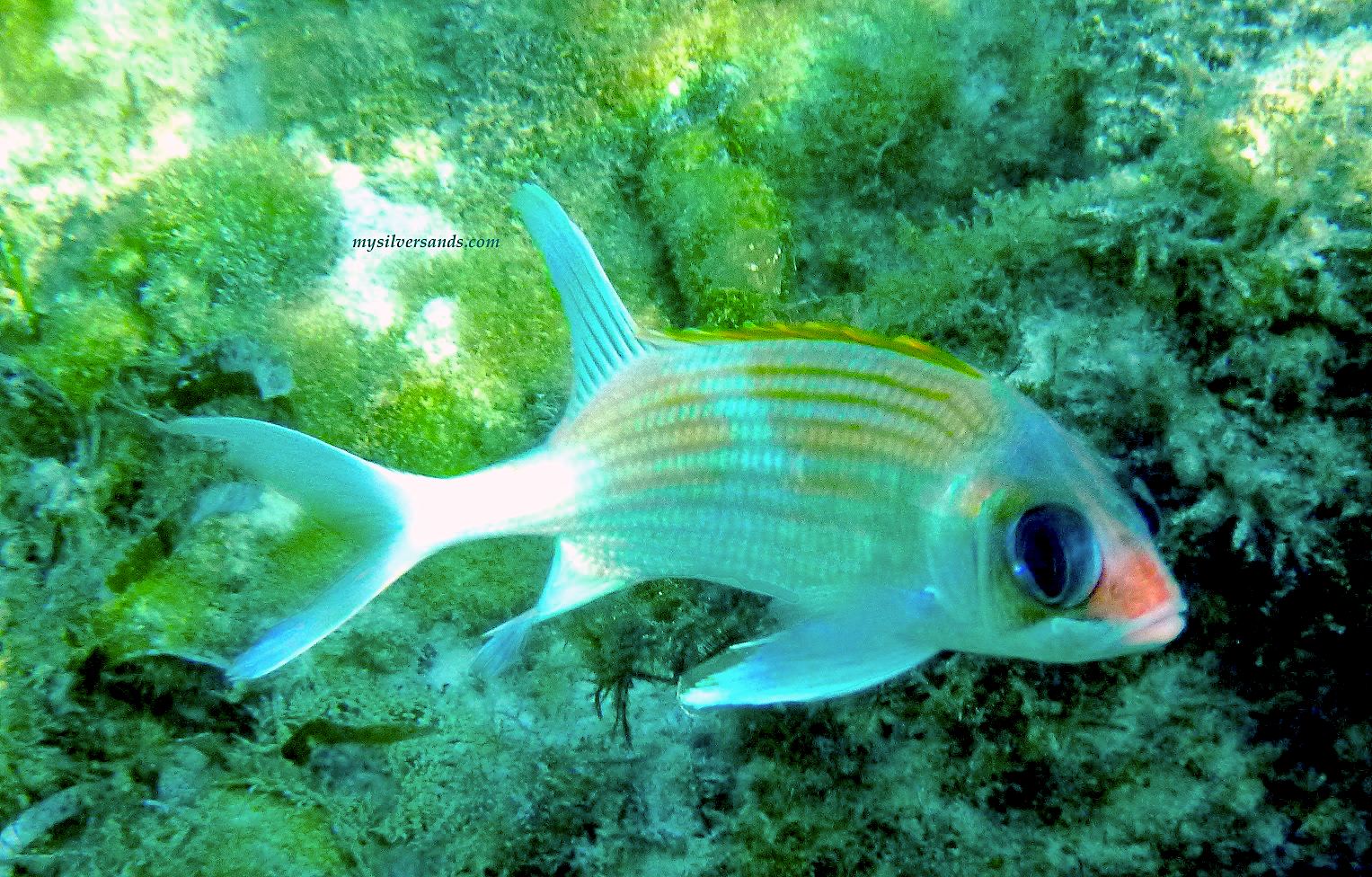
"I thought the snorkeling was the best I had seen in some time." Loretta Fenske, Spicer, Minnesota, USA
Snorkeling at Silver Sands Jamaica
by Marnie Mueller (aka Snorkel Plenty) of Jammahome
Snorkeling is a great sport for almost anyone who can swim. I am not a strong swimmer, and I started snorkeling fairly late in life. It's an undemanding sport with enormous rewards. Best of all, Silver Sands provides a variety of snorkeling experiences for the novice as well as the more advanced snorkler. Just off shore is a small discontinuous coral reef, and further off shore but easily accessible by boat (or by swimming but why waste your energy getting there?) is a larger more continuous reef.
How to do it
While your pleasure at pursuing any sport is directly related to the quality of your equipment, never was that more true than in the case of snorkeling equipment. A leaky or improperly fitting mask or a leaky snorkel means that you spend all your time treading water vainly adjusting your equipment rather than looking at the fish. If you're near sighted or don't wear your contact lenses in the water (which you are not supposed to do, but my daughters always have and it's never been a problem), you'll be happier if you purchase a face mask with your subscription in it. If you are just a bit nearsighted you probably won't have a problem because water magnifies, but if you have much of a prescription, order a customized mask (which may take up to 6 weeks, so don't try to make this a last minute purchase). They are surprisingly cheap considering what normal glasses cost and make all the difference.
When to do it
Seven or eight in the morning is a great time to snorkel because it is usually calm then, and you don't have to worry about sunburn on your back and arms. Also you can snorkel, take a shower, have a luscious Jamaican breakfast, and have the rest of the day for whatever else you choose to do.
If the sea is calm enough, you can snorkel anytime, but later in the day you must protect yourself from sunburn with a lot of lotion and/or a tee shirt.

There are many types of rays in the sea off Silver Sands beach.
Where to do it at Silver Sands
1. Tour From The West Beach
It is very easy to simply walk into the ocean from the shore and casually snorkel for as long you wish. The "start-up costs" only involve putting on your snorkeling equipment and a pair of beach shoes, modified flippers, or regular flippers (in which case you have to walk in backwards to make any progress).
A good place to start is just off the East corner of the house called Ebb Tide (No. 27). Walk into the water, picking a path through the sea grasses and discarded conch shells being careful to avoid the occasional sea urchin whose spikes would be very unpleasant to pick out of your foot or leg. After a few feet the sea grasses disappear, and you can dive or jump into the shallow, wonderfully tepid waters. Immediately you'll see schools of small doctor fish, surgeon fish, perhaps a blue tang in its baby color of yellow, and wrasses of various colors, as well as baby fish of other varieties swimming around isolated pieces of coral.
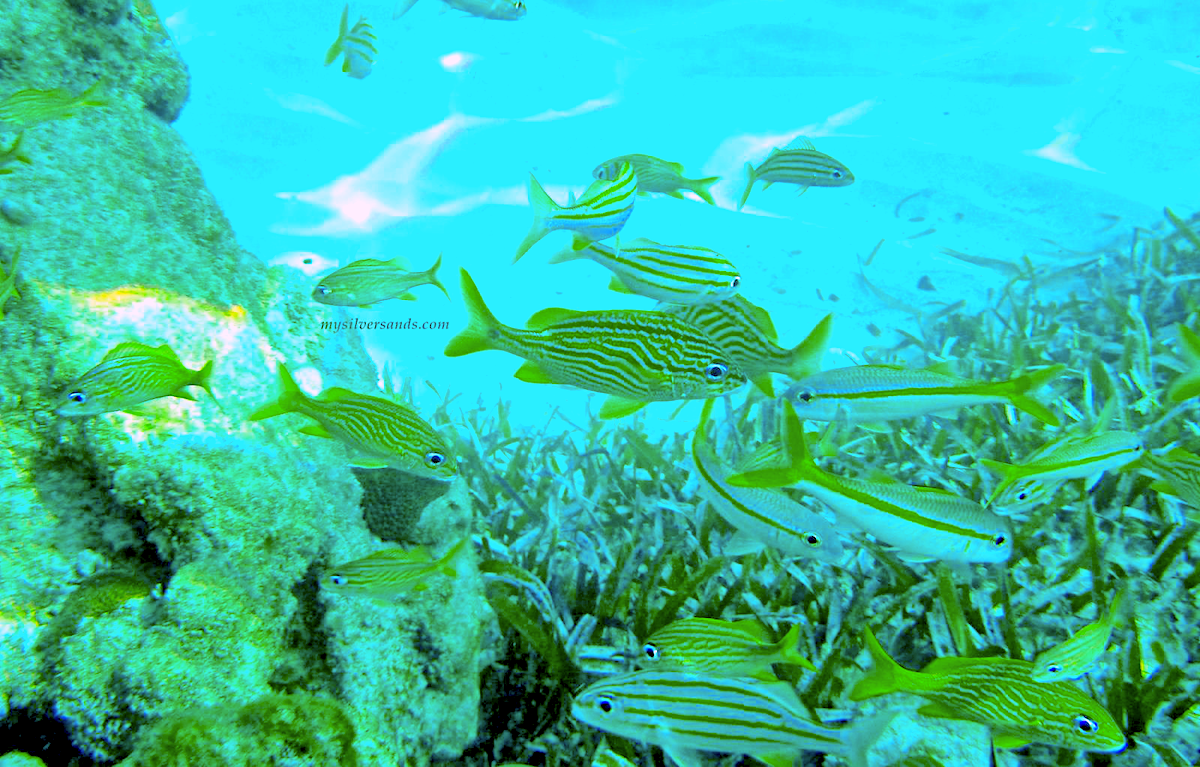
Don't stop now, but continue swimming, checking back over your shoulder occasionally to keep yourself swimming straight out from the Easternmost corner of Ebb Tide. At some point you'll find yourself entering a "valley" with coral on either side. There'll be isolated mounds of coral on the right hand side that are fun to explore. Here you'll find small soldier fish and squirrel fish, damsel fish, perhaps some sergeant majors, the usual wrasses, doctor fish, surgeon fish, parrot fish, and some blue tangs.
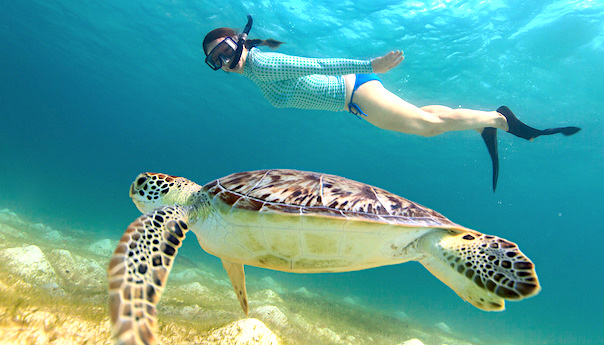
Will you be lucky enough to see a turtle?
Continue on swimming out into the valley. Now it's time to concentrate on the left hand side. Here is a coral mound just teeming with schools of fish, those you've seen before, only much larger and in amazing abundance, but the stars of this reef are the grunts. They cover the reef swirling back and forth. It's great fun to learn to recognize the several different varieties. As you explore this area, if you're lucky, you may see a group of squid lined up looking at you. They are friendly, curious creatures that are as fascinated by you as you are by them. Usually there are eight to fifteen or so of various sizes, but once my husband and I saw 32 lined up (that is not a "fish" story!). You also might see a manta ray scuttling along the bottom, though that's much more common out on the big reef.
Once you learn to hover quietly over rocky outcrops with hiding places you will see eels and puffer fish. Beautiful butterfly fish and the occasional angel fish provide bright spots in the tapestry of grunts, soldier fish, and blue tangs. There is a large brain coral just to the East of this coral reef. Swim around that taking time to look at what congregates there and then head due East to what we call the "monster" rock. This is a very large rock a few feet north of the coral reef that always holds a surprise or two, such as an eel or an angel fish or a high hat, among its soldier fish and squirrel fish.
Now you can head back to shore, either through the valley you came up or if you're more adventuresome over the coral reef heading in the direction of Jamahome. As you swim along, you'll see several coral "tables" with crevasses surrounding them. These are marvelous things to investigate (good places to see a puffer fish) but as always, particularly in a rough sea, be careful not to swim too close. Finally just in front of Jamahome or off slightly to the East there are some interesting little nooks that may on occasion have all sorts of interesting fish, even a flounder which blends in almost perfectly with the white sand.
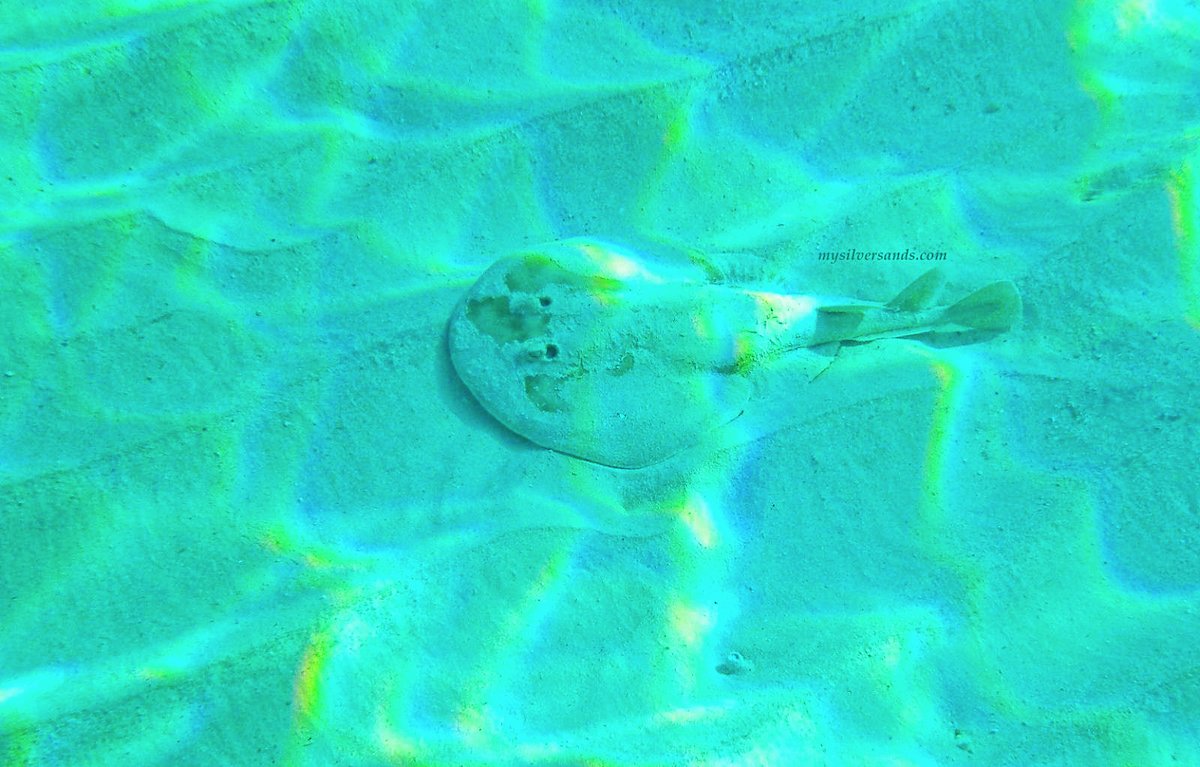
Alternative routes:
-
When you're out on the coral reef to the West of the valley keep going West across another valley, and you'll reach another coral reef. It has pretty much the same fish as the coral reef you've just been at but you may see a new type of butterfly fish.
-
When you're at the "monster" rock, instead of heading toward Jamahome, stay along the edge of the coral reef going East and then at the jetty turn south and come into shore at Rum Jetty. You'll see more fish and an occasional surprise like the orange-spotted file fish.
2. Tour From The Swimming Beach
There is a small coral reef in the West part of the beach with a few fish, but to see more fish, go to the far East of the beach near to the steps and then swim East. This is a different snorkeling experience from that described above because the rocks are closer so you see the fish up closer. It's a good idea to wear a life jacket the first time you go here because the coral is so close to the surface it can be a bit rough. There are interesting things to see in the pieces of coral continuing East around to the deserted beach beyond Silver Sands' property.
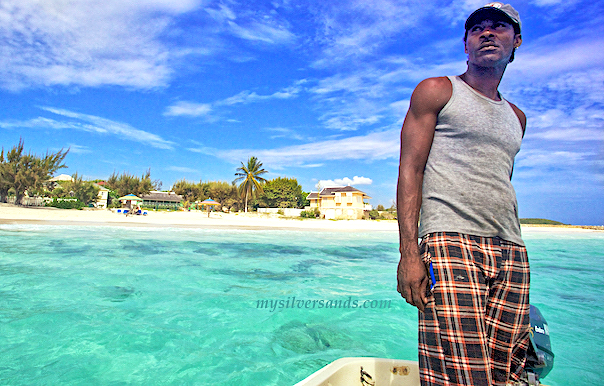
Ask for Mushtaq who takes guests out on snorkeling trips.
3. Tour From A Boat
Get in touch with the Mysilversands Rep who will put you in touch with someone to take you to the big reef. He'll take you to a good place and patiently wait for you to snorkel for 45-50 minutes (an hour all together with the ride there and back included). Here you'll see some of the same but also many different fish from those you saw on the smaller reefs. You'll notice schools of blue and brown chromis, lots of parrot fish, some very colorful larger wrasses, loads of sergeant fish and damsel fish. Here you're also much more likely to see a manta ray on the bottom in the valleys within the coral reef. You may even see a barracuda. (But in all the snorkeling we've done, we've never seen a shark because supposedly they stay out beyond the big reef.)
Reef Map
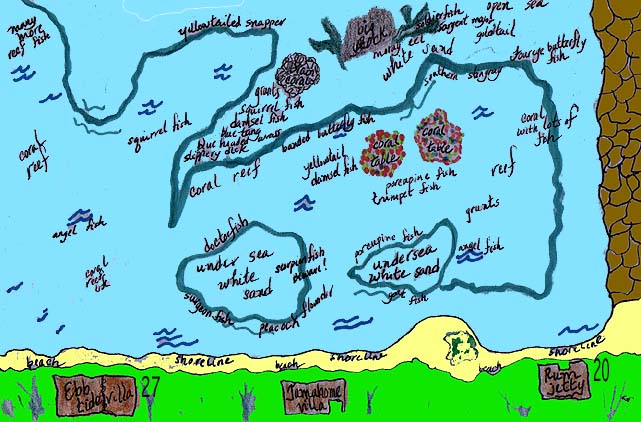
The onshore coral reef at the West Beach of Silver Sands. Original Map produced by Marnie Mueller. Thanks to C. Cunningham for redrawing the map in a form suitable for web publishing. This map is copyrighted. All rights reserved.
Saftey First
Never touch the coral. Besides the fact that you'll damage the ecology of the area by doing that, you could get stung or have a piece of coral embedded in you. Don't go close to or among the coral until you've learned how to handle your body in the buoyant salt water, and keep your distance particularly when it is rough.
Never snorkel alone. It is so easy to swim in salt water and the whole experience is so enthralling and benign, after a time or two, it is easy to lose your natural sense of caution. Make it a never-to-be-broken rule to never snorkel alone.
Wear a life jacket if you're going some place you haven't gone before, or if it is rough, or if you just want to be a bit lazy and not have to move to stay in place.
Never touch or provoke the fish or other animals.
Stinging Things
Fire coral, spiny fish, anything really ugly. If it's really ugly or has spiky things coming out of it, stay away. Without exception, none of the sea creatures is eager to take a "fish" of your size on. They will only attack if you mess with them or corner them.
There are some little things that look like jelly fish (transparent) but they do not have tentacles and don't sting. There are very occasional jelly fish, mostly when the water gets warmer, but they are very rare. You just have to be careful to stay away from tentacles, and leave the area.
With all the snorkeling I've done I've never been stung.
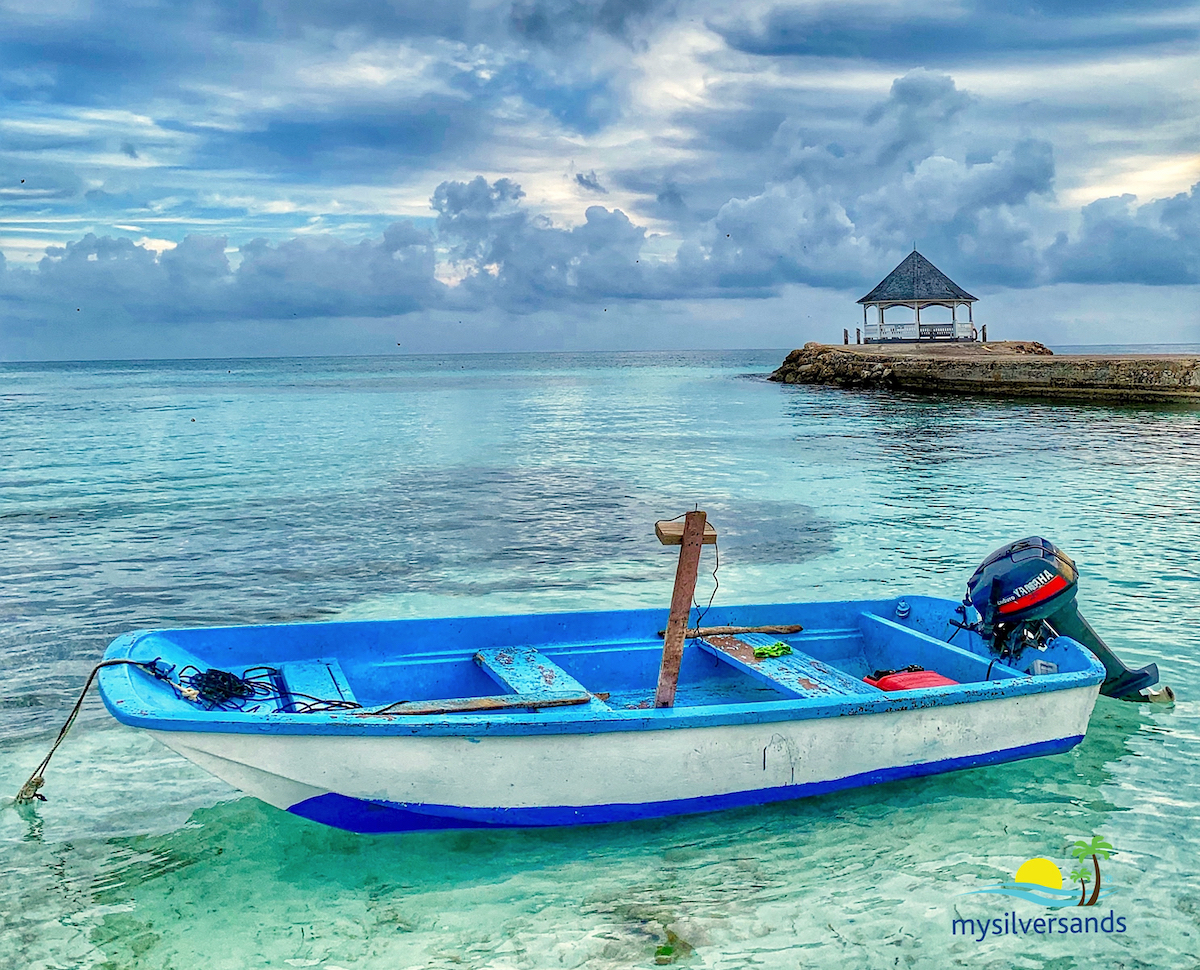
See Lea and Randy's Snorkeling Adventures at Silver Sands Jamaica.
Use our Jamaica Accommodations as your base for Things to do in Jamaica.
fiogf49gjkf05


